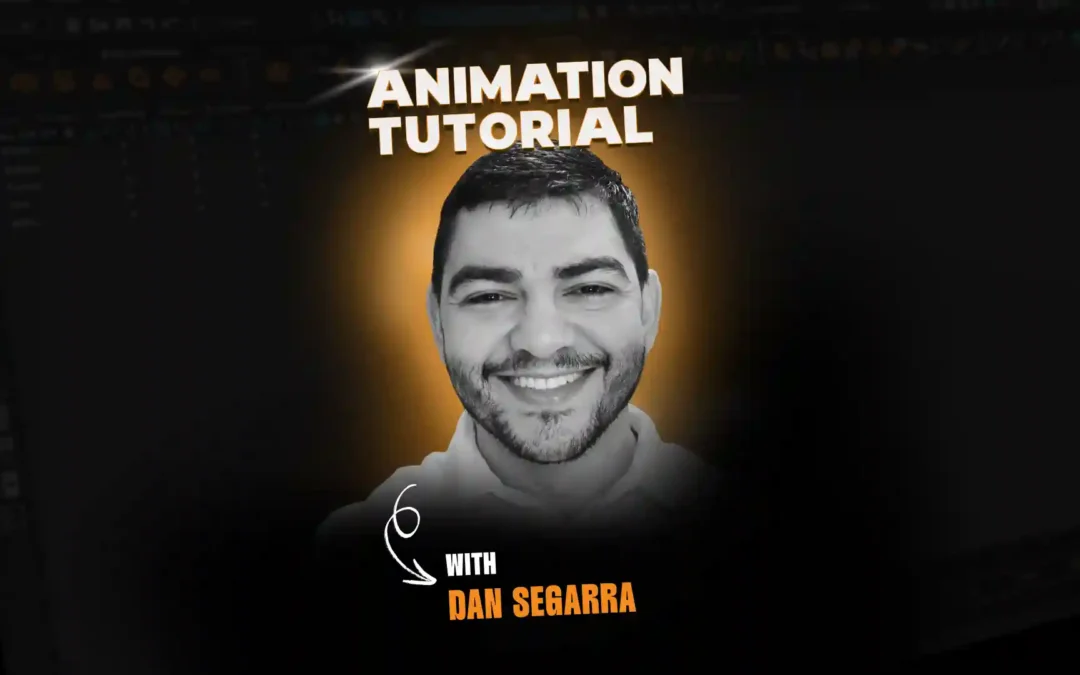Your Online Guide for Learning How to Animate
A step-by-step guide for a career in animation, or just for fun!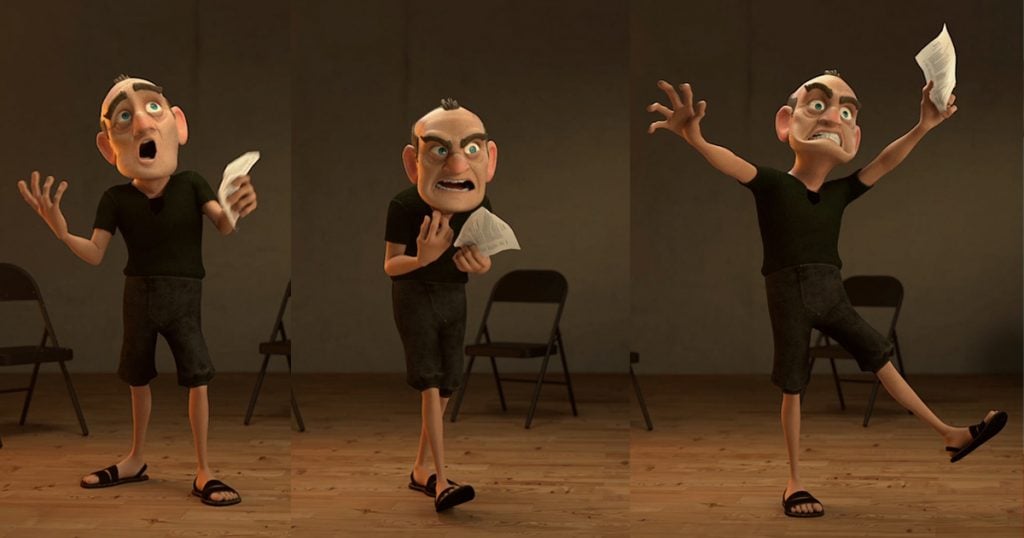
Dramatic shot by António Vieira
Considering a Career in the Animation Industry?
This guide will show you what professional animators do and share how to get started on your own animation career. It will outline the skills and education you need, as well as key steps to getting a job as a professional animator.Animation Studios & The Animation Pipeline
Animation is a broad discipline with many facets and specialties. Before we jump in, let’s look at some of the behind-the-scenes steps that studios go through to make your favorite animated films. First, imagine that an animation studio is a machine made up of many moving parts. In this case the parts are departments, people, and projects and together they build visual stories. You can break down the assembly line of this machine, let’s call it the Film Production Pipeline, into three large groups:- Pre-production is the earliest stage of the film, and involves things like script writing, storyboarding, visual development, and others. It’s where a lot of the story’s building blocks are created.
- Production is the middle stage and includes pieces like character modeling, rigging, and animation. This is where much of the building happens, using those initial blocks to shape the story.
- Post-production is the final stage, including compositing, VFX, and color correction. This last step is about the details, polishing the story and getting it ready for the audience.
What Animators Do
Animators are artists, but instead of tools like paint brushes they use the characters we see on screen to tell a visual story. It’s the animator’s job to take the script and the director’s vision and bring characters to life. If they do it well, the audience may forget that they’re watching what is essentially a digital puppet and not a living, breathing person. Animators can be acrobats, comedians, and actors, sometimes all in the same scene! Their job is to create dynamic and interesting character performances for movies, TV shows, games, and advertising.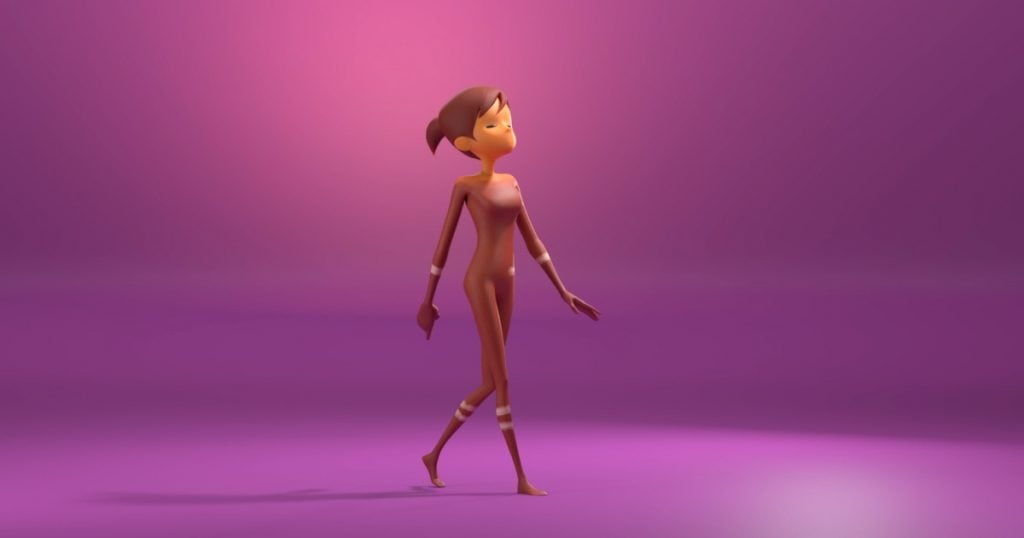
Colorful walk cycle by Hector Gil
- Feature Film Animators work on movies and TV shows to create appealing and entertaining performances. These animators are responsible for the memorable character performances in movies like Frozen, Spider-Man: Into the Spider-Verse, and How to Train Your Dragon.
- Game Animators typically focus on body mechanics and physical performances, with an emphasis on weight and impact. They create dynamic animation that makes both the gameplay and storytelling immersive.
- VFX Animators use varying levels of exaggeration and subtlety to animate digital characters alongside their live-action counterparts.They frequently bring superheroes, giant robots, and fantastical creatures to life.
Different Types of Jobs in the Animation Industry
Earlier in this article we outlined the Film Production Pipeline and the three phases of production: Pre-Production, Production, and Post-Production. We’re huge fans of animation, but animators will be the first to tell you that their art is collaborative and that it takes many talented people working together to bring movies, video games, and other projects to life.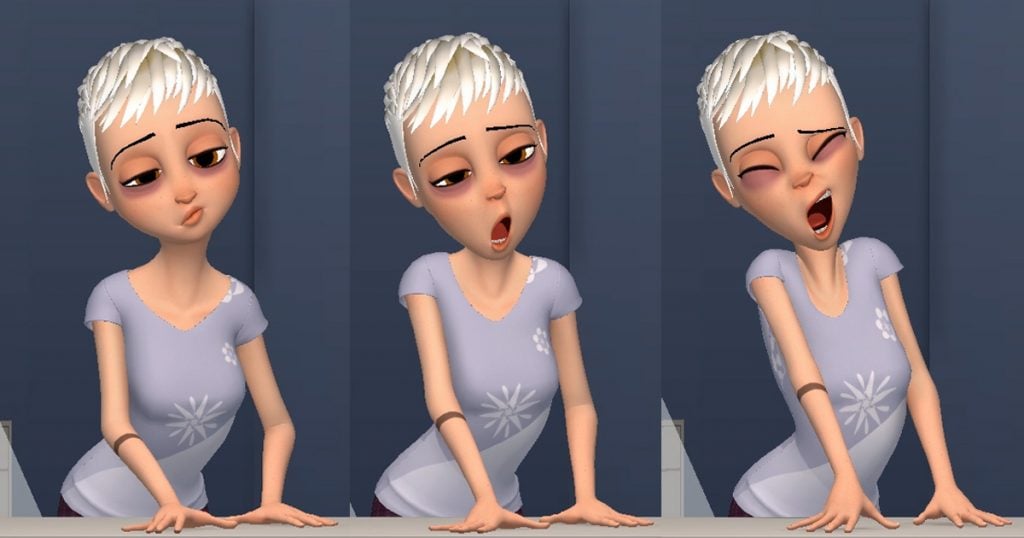
Shot by Silvia Panicali
Pre-Production Job Titles
- Art Director
- Background Artist
- Character Designer
- Concept Artist
- Effects Designer
- Environment Designer
- Previs Artist
- Story Artist
- Visual Development Artist
Production Job Titles
- 3D Modeler
- Animator
- CG Artist
- CG Supervisor
- Character Animator
- Cloth Simulation Artist
- Groom Artist
- Layout Artist
- Layout Technical Director (TD)
- Lighting Artist
- Lighting Supervisor
- Matte Painter
- Modeling Supervisor
- Modeling TD
- Rigging Artist
- Rigging Supervisor
- Rigging TD
- Shading TD
- Shading/Texture Supervisor
- Texture Artist
Post-Production Job Titles:
- 3D Rendering
- Compositor
- Editor
- Motion Graphics Artist
- Roto Artist
- Sounds Effects Artist
- VFX Artist
- Visual Effects Supervisor
Is 3D animation a good career choice?
We think so, but it’s important to make sure it’s a good fit for you! Check out this page for more info about salaries and industry growth. We also took an in-depth look at the animation jobs some of our students and mentors are doing, including reasons why they love their work.
Exciting chase by Ximo Ferrer
Do you need a degree to get an animation job?
No! The good news is that you do not need a college or university degree to get a job as a professional animator. Feature film and game studios don’t really care about degrees, they care about your skill set. Do you have good body mechanics? Can you act a range of emotions and scenes? You highlight your skills by putting together a demo reel to show future employers. A demo reel is a series of short clips, usually 15-30 seconds, that showcase your absolute best animated work. For more specific information about what recruiters look for in a demo reel, please see tips from Animation Mentor Co-Founder Shawn Kelly, along with many other blog articles and videos on the subject. Take a look at Animation Mentor’s Student Showcase, which is essentially a school demo reel. The Showcase highlights the best work from our students, many of whom started our program with zero animation experience.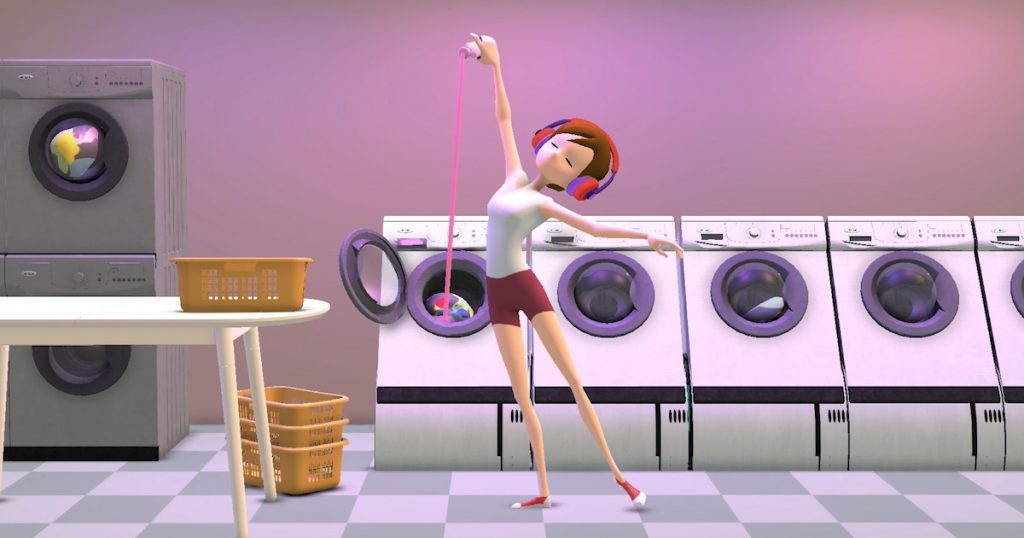
Still from a shot by Madison Erwin
How to start learning animation with Animation Mentor
Animation Mentor offers a 6-course animation training series for people who are new to animation and want to learn how to become professional animators. The courses build upon the 12 principles of animation so that as you progress through the curriculum you create more complex and dynamic assignments. Like every pro animator in history, you’ll start by mastering the fundamentals. Learn to animate a basic walk cycle and then move on to create more complex movements like jumping, climbing, and dancing. By the third course, Advanced Body Mechanics, you’ll use animation reference to create an exciting action sequence. The rest of the Core Animation Courses focus on creating outstanding animated performances. From perfecting the art of facial animation, to creating engaging dialogue scenes, you’ll learn to animate Oscar-worthy performances the pros would be proud of. Once you’ve mastered the skills you need to succeed, you’ll get advice from the best mentors in the industry on what studios look for in an animator and how to create the perfect animation demo reel. All of our courses are taught by industry pros—from studios like Disney, Pixar, DreamWorks, and Sony—who will give you feedback on your animation and mentor you to be successful. You’ll join a caring, online community of like-minded peers who share assignments, feedback and support, and build life-long friendships and connections.You will also have access to professional rigs that you can use on assignments and your demo reel, with ongoing access after you graduate. In total, the series takes 18 months to complete. Once you’ve completed the 6 Core Animation Courses, you can also sign up for the many workshops that teach other specialized skills. Animation is an art that takes passion, patience, and practice. You can’t fake passion, you either have it or you don’t, but the rest is just hard work. The true secret to an animator’s success is this: The more time you spend on animation, the better you will become.How to Animate for Beginners
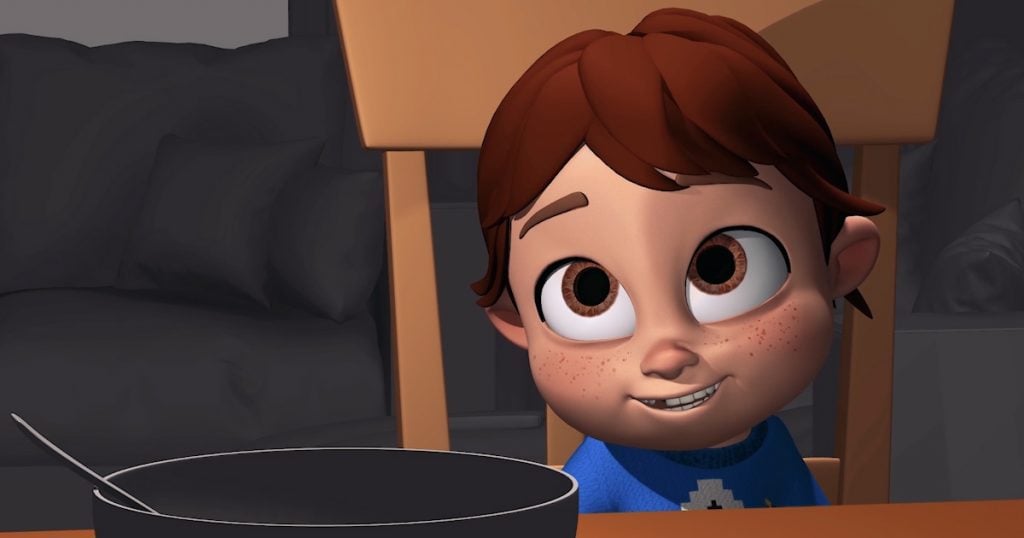
Shot of our Quinn rig by Ryan Pfeifenroth
Free 3D Animation Video Tutorial For Beginners
If you want to learn 3D animation for beginners, check out our free video tutorial series taught by one of our Co-Founders, Bobby Beck. Not only did he help create a school to train future generations of animators, he was also one of the lead animators on Monsters Inc. and Finding Nemo! Bobby will walk you through downloading a free Maya rig and show you how to get access to a student version of Autodesk Maya’s software so you can work through the exercises and create a simple animation. This exercise will help animation beginners get comfortable with the Maya software and familiarize you with animation techniques like:- Timing
- Spacing
- Weight
- Arcs
- Squash & stretch
- Appeal (and more!)
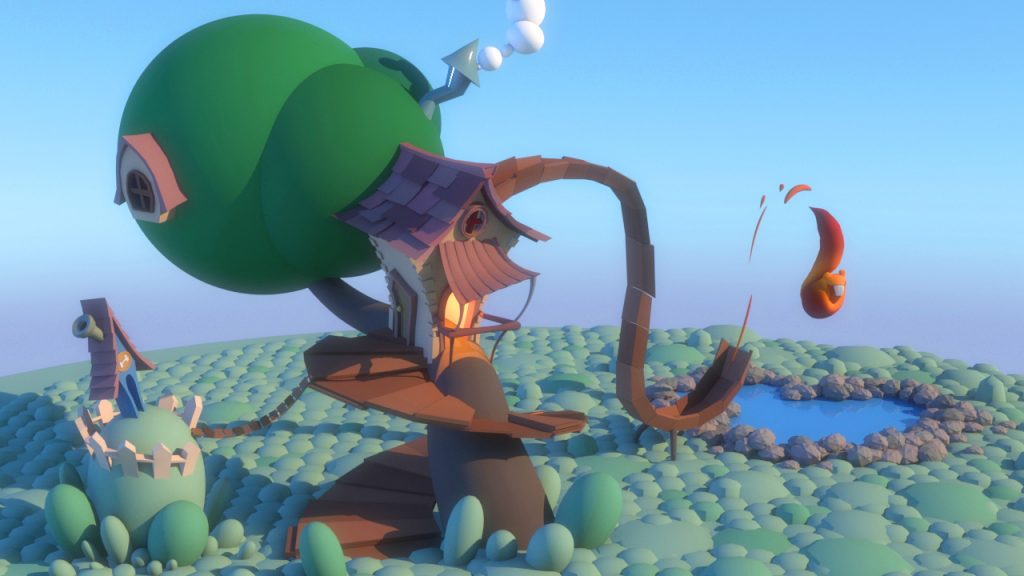
Whimsical squirrel house from Maya student Ximo Ferrer
Animation Software for Beginners
Animators use many different tools to animate and while there’s no way to list every one of them here, we’d like to outline the most popular ones for you (they’re used by animation studios worldwide).3D Animation Software Tools
- Autodesk Maya – If there’s a gold standard for 3D animation software it’s Maya. This is the go-to tool for professional animators and studios, and it’s crucial that new animators learn to use it. Although licenses can be expensive, Autodesk offers a free educational version.
- Blender – Blender is gaining popularity as a high-quality but still free 3D animation tool. This software has grown in recent years to include better usability and exciting features. If the price of Maya is too much for you this is your next choice.
- Houdini – Houdini is famous for giving artists the ability to create stunning visual effects. Like Maya it’s a bit harder to learn, but there is a free version available for students.
- Cinema 4D – Marketed as one of the easiest tools for 3D modeling and visual effects, Houdini is good for anyone interested in enhancing live action movies with realistic effects.
- Autodesk 3DS Max – 3DS Max is another Autodesk software that covers several animation pipeline steps. It’s best known for game animation and modeling.
2D Animation Software Tools
- Toon Boom Harmony – Harmony by Toon Boom is an animation tool that can be used by both pros and new animators. We recommend it for our 2D Animation for Beginners Workshop.
- Adobe Animate CC – Adobe created this software so it’s easy for beginners to understand, but also complex enough for professionals to enjoy.
- Adobe Character Animator – This software’s main goal is to make facial animation as easy as possible. It does that by connecting to your webcam and animating a 2D character according to your facial expressions. While this is a great tool for beginners, we still recommend learning facial animation on its own.
- Adobe After Effects – This software is used in the industry for character animation and character rigging.
Best Animation Hardware
- Drawing Tablet – A drawing tablet is a tool used to create digital sketches. This is must if you want to become a concept artist or simply want to draw out a scene for a storyboard. Wacom makes some of the better known products in this area.
- A Good Computer – Animating scenes with complex rigs, atmospheric lighting, and multiple moving objects takes a lot of processing power. You’ll need fast memory and a good graphics card. If you are not sure exactly what to buy, high or mid-range gaming PCs should have what you need. This website has several good articles about the best computers for animation.
Animation Resources
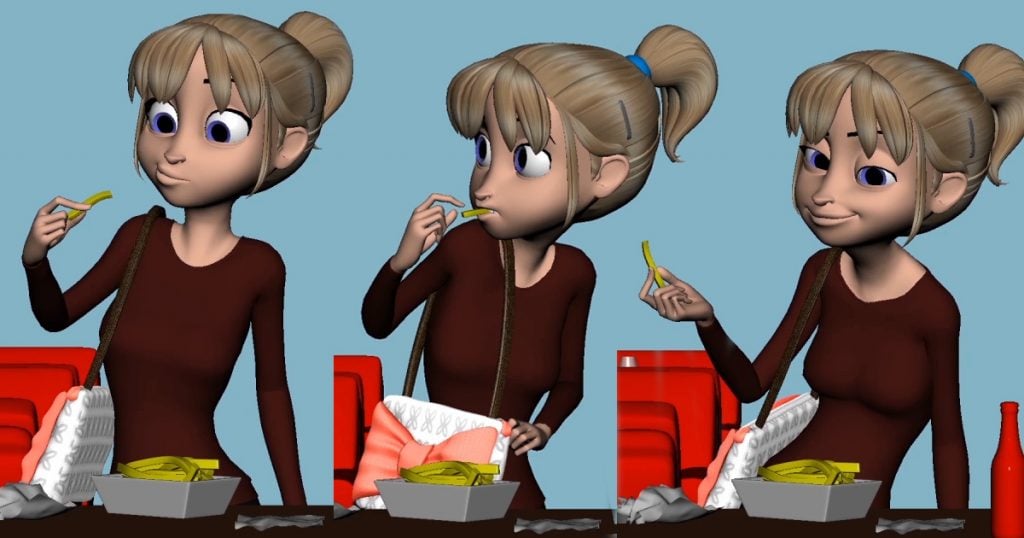
Cherise Higashi’s shot of our hungry Aia rig
- 11 Second Club
- 3dtotal
- Animation Magazine
- Animation World Network
- BlenderNation
- Cartoon Brew
- CGSociety
